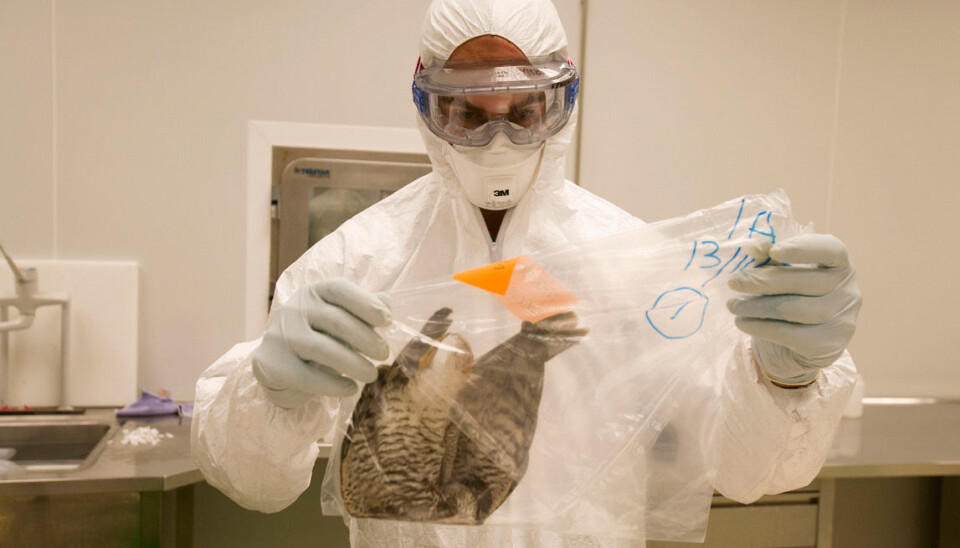This article was produced and financed by University of Bergen

Creating universal influenza vaccines
The Influenza Centre in Bergen is within touching distance of a flu vaccine that can outlast annual seasonal vaccines.
Denne artikkelen er over ti år gammel og kan inneholde utdatert informasjon.
Every year about 1,500 Norwegian die of seasonal flu. Each season, the Influenza Centre in Bergen is hard at work to produce new vaccines: mainly to protect the most vulnerable groups; such as infants, the elderly and those with a weak immune system.
“The problem currently is that we can only offer a general vaccine, and one that protects only moderately,” says Professor Rebecca J. Cox.
International influenza adviser
Professor Cox is the leader of the Influenza Centre in Bergen. She is also an adviser to the World Health Organization (WHO) and the European Medical Agency (EMA).
Seasonal influenza vaccines have been produced in the same way for more than 50 years, and offer moderate protection against influenza. However, this is short-lived. Every year, a vaccine is created that contains four flu viruses, picked by the WHO. The Influenza Centre wants to go beyond this, by creating a tailor-made and longer-lasting vaccine.
“Ideally, we would like to create a life-lasting vaccine,” Cox says, “and it finally looks like we are closing in on a one-off vaccine that protects for life.”
One shot could be enough
Traditionally, vaccines were made to allow the immune system to recognise the virus’s spiked head. But with new strains of influenza virus, the virus’s head may alter its shape and this fools the immune system. Researchers spotted that the spikes, which the virus’s head rests on, sitting close to its body at the root of the virus, are conserved between viruses.
“Animal testing has shown that a vaccine that recognises the body of the avian influenza, commonly known as bird flu, also protects against other viruses,” says Cox. “Now we are able to create vaccines that target completely different influenza viruses. What remains is human trials.”
If Cox and her team are able to create such a vaccine, there may no longer be the need for that annual flu vaccine. One shot could be enough and, if we are lucky, might also save us from the recurrent pandemic panics in the media.
Cox does, however, urge a note of caution; such a vaccine may be at least ten years into the future.
Testing targeted vaccines
The WHO recommends another line of thinking about vaccines: customising. Currently, researchers at the Influenza Centre in Bergen are testing a nose-spray vaccine aimed at children and young people between the ages of 2 and 17.
According to Cox, a vaccine aimed at this group has already been available in the United States for a decade. This has proven a major improvement on previous products. The vaccine is now being licensed throughout Europe, and was available for Norwegian children and teenagers from autumn 2013.
“The vaccine’s goal is not only to protect children from disease, but also to indirectly protect adults,” explains Cox. “Twenty per cent of children and young adults are infected by the influenza virus each year. In effect, small children infect their own grandparents.”
By containing the virus, an effective vaccine also protects other groups at risk.
“Targeted vaccines are a new way of thinking in vaccine research, in line with the WHO’s new goals for vaccinations,” says Cox.
Horizon 2020 ambitions
The UiB researchers now work on creating targeted influenza vaccines for the elderly, and are applying for a grant from the European Research Council’s new framework programme, Horizon 2020.
Cox believes that both the high-tech lab and the short distance between lab and clinic at Haukeland University Hospital, where the Influenza Centre in Bergen is based, contribute to the centre’s high international status.
“Whereas other researchers have to freeze and transport blood samples, in Bergen, everything is in one place,” she says. “We conduct clinical trials and measure a patient’s immune system all at once, and we also have a brilliant modern lab. And let us not forget that we have delivered results in recent years.”
Professor Cox is referring to the Influenza Centre’s central role in developing vaccines against the avian influenza strains H5 and H7, as well as a swine flu vaccine.
“Our work on these vaccines has provided us with an excellent understanding of how vaccines work and how they compare,” she says.
Cox also highlights the Norwegian tradition of collective effort as a criterion for success.
“When you have a vaccine trial, Norwegians are prepared to enrol voluntarily, and if people participate once, they are more likely to take part in the future,” says Cox. ”As researchers, we are dependent on the public to participate to create better future vaccines






























